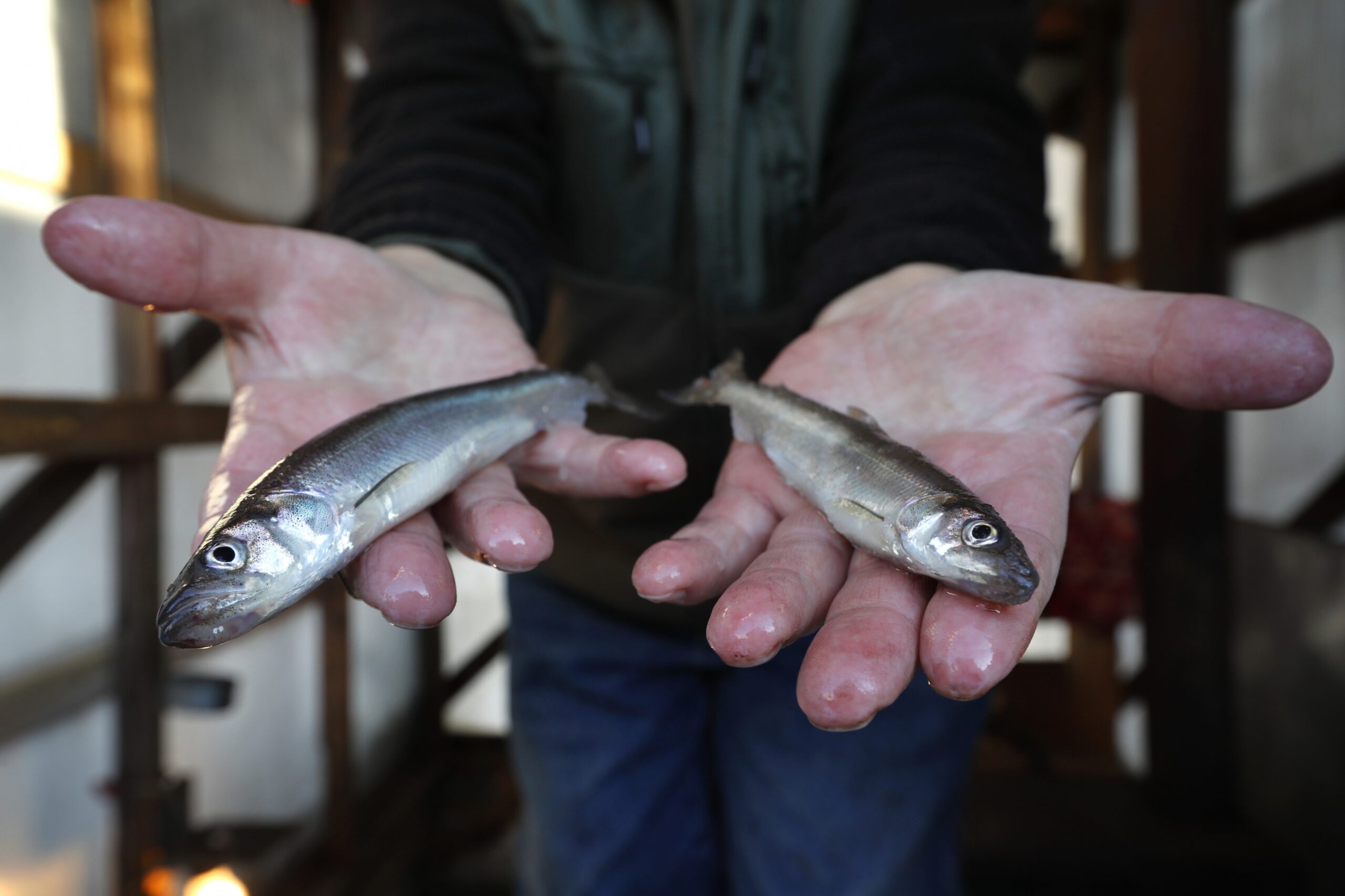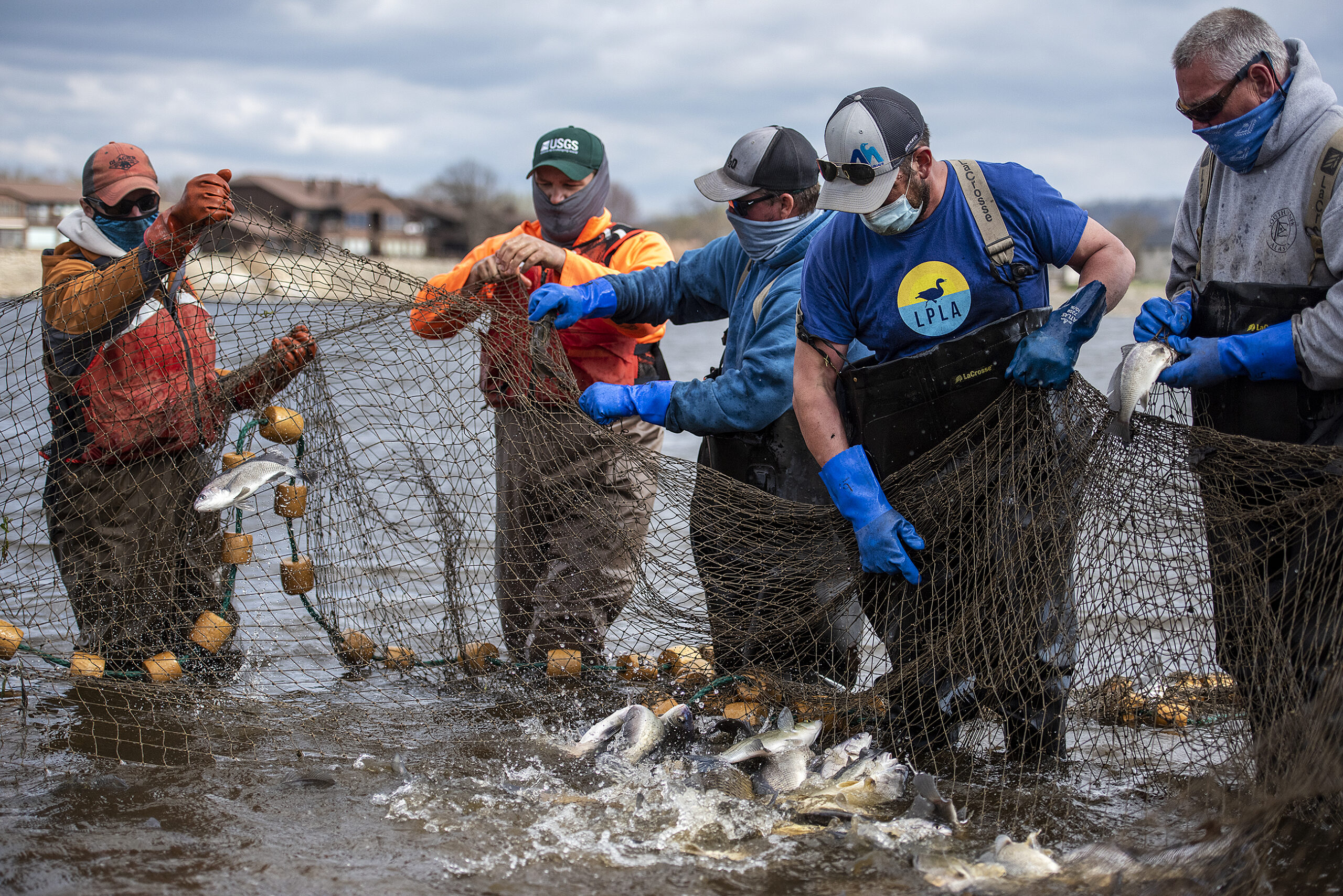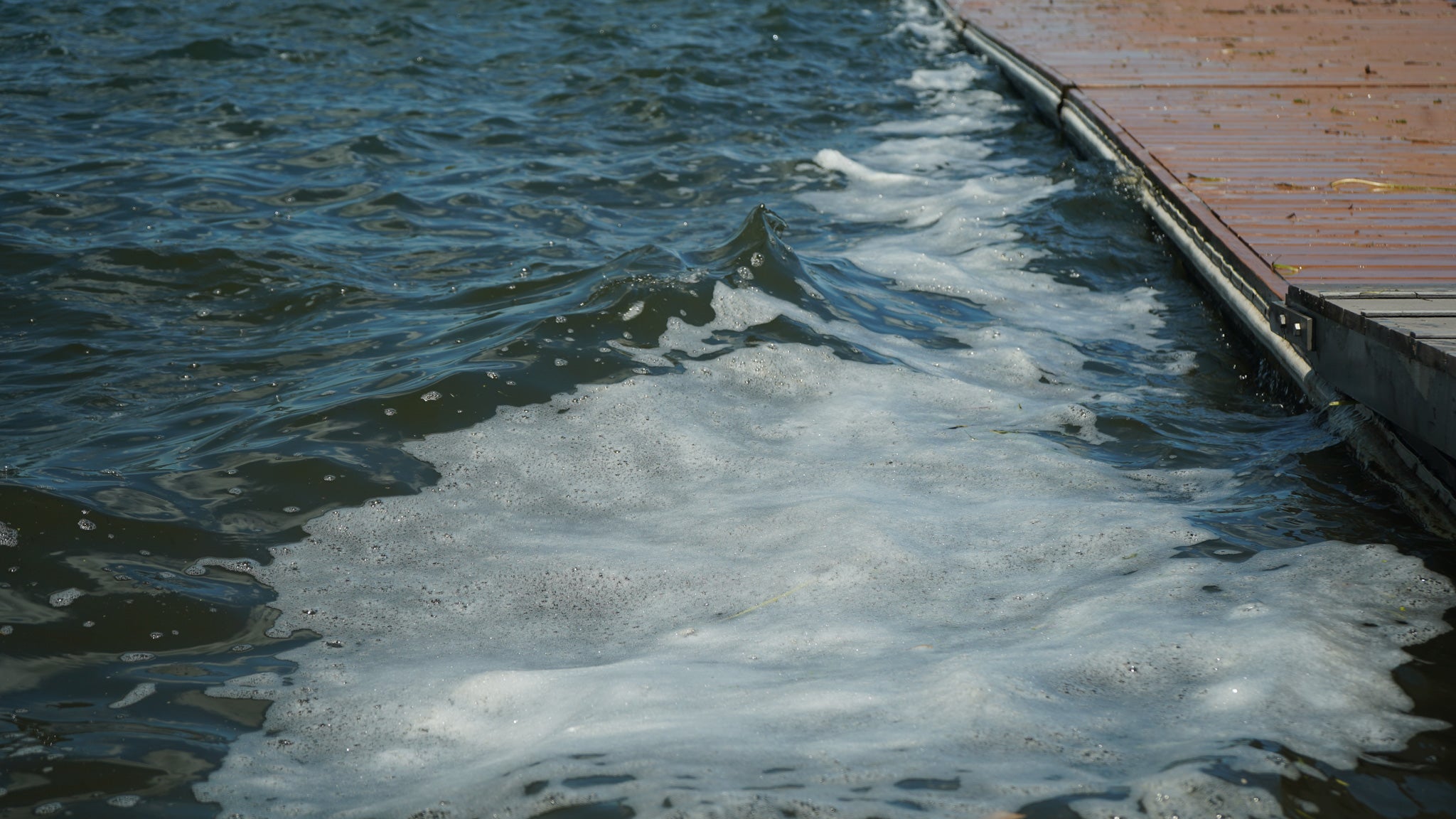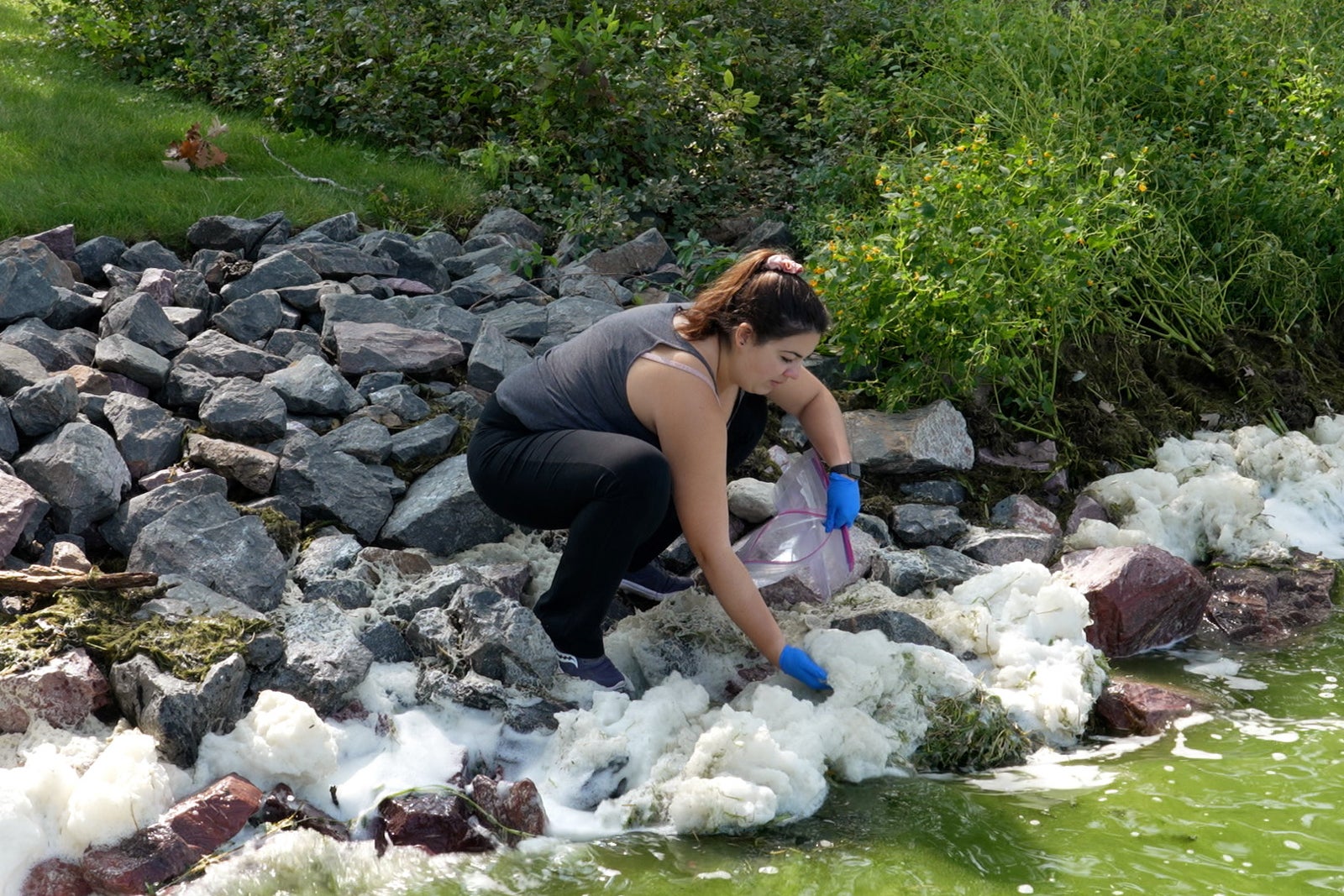A new study found dining on one fish caught in freshwater could be the same as drinking PFOS-contaminated water for a month, with highest levels of the harmful forever chemicals observed in Great Lakes fish.
The study published in the journal Environmental Research is an analysis of government data collected by the U.S. Environmental Protection Agency. Researchers from the Environmental Working Group and Duke University reviewed data from more than 500 fish fillet samples drawn from national rivers, streams and the Great Lakes from 2013 to 2015. The sampling was part of the agency’s National Rivers and Streams Assessment and the Great Lakes Human Health Fish Fillet Tissue Study.
Researchers say their review found eating one freshwater fish is similar to drinking water polluted with PFOS — one of the two most widely studied PFAS — at levels of 48 parts per trillion for a month.
Stay informed on the latest news
Sign up for WPR’s email newsletter.
“We found that even one or a few meals a year would likely have a significant impact on your blood levels, and so (it’s) really quite concerning in that regard that even very infrequent freshwater fish consumption could likely be a significant source of exposure,” David Andrews, senior scientist with the nonprofit Environmental Working Group, said.
The analysis of 44 fish species sampled, which included walleye and largemouth bass, showed the highest PFOS levels among 152 samples collected from the Great Lakes with average concentrations of 12,350 parts per trillion. Levels of 13 PFAS chemicals observed in Great Lakes fish averaged 11,800 parts per trillion. Andrews said it’s not yet known what’s driving higher levels in Great Lakes fish.

“I believe it’s in part because the water in the Great Lakes is not continually flowing and rushing out into the ocean. I mean, it is, but on a much slower timescale,” Andrews said. “So water and contamination that ends up in the Great Lakes actually sticks around a lot longer.”
The study included a map showing locations of PFOS-contaminated fish. Near the city of Superior, a lake trout sampled in Lake Superior had levels of 21,000 parts per trillion while a coho salmon tested near Milwaukee in Lake Michigan had levels of 19,000 parts per trillion. In Green Bay, a channel catfish showed levels of 5,000 parts per trillion.
The findings of the peer-reviewed study come as federal regulators have updated health guidelines for PFAS chemicals in drinking water from 70 parts per trillion to levels less than zero for PFOA and PFOS. The EPA based its updated advisory levels on research that indicates the compounds may be harmful at much lower concentrations.
PFAS, or per- and polyfluoroalkyl substances, represent a class of thousands of synthetic chemicals widely used by industry since the 1940s. They’ve been used in everyday products like nonstick cookware and stain-resistant clothing, as well as firefighting foam. PFAS have been dubbed “forever chemicals” because they don’t break down easily in the environment. Studies have found PFAS in the blood of 98 percent of Americans, and research shows high exposure to the chemicals can cause kidney and testicular cancers, fertility issues, thyroid disease and reduced response to vaccines over time.
The most recent study found widespread contamination among freshwater fish nationwide with average levels of roughly 9,500 parts per trillion among species sampled from rivers and streams. A smallmouth bass sampled from the Mississippi River near La Crosse showed PFOS levels of 21,700 parts per trillion while smallmouth bass tested in the Wisconsin River near Wausau had concentrations of 43,800 parts per trillion.
PFAS concentrations averaged 278 times higher than chemicals found in commercially caught fish tested by the U.S. Food and Drug Administration in the last three years. Andrews said the difference likely stems from store-bought fish that comes from marine environments or fish farms that have less polluted water.
Researchers called for a single fish consumption advisory for freshwater fish nationwide. Andrews advised anglers to pursue alternatives to eating freshwater fish, but he highlighted the issue poses environmental justice concerns for populations that rely more on fishing for sustenance.

In 2018, the Wisconsin Department of Health Services began conducting a biomonitoring study of Burmese residents in Milwaukee whose diets are traditionally rich in fish. The findings showed high percentages of women of child-bearing age who ate sportfish potentially polluted with mercury and other contaminants like PFAS, according to Jon Meiman, chief medical officer for environmental and occupational health at DHS.
“In certain populations, generally speaking, older persons tend to have higher levels of PFAS, which we saw in our anglers. But, we also saw some elevated levels also in the Burmese community,” Meiman said. “When we did some initial analysis of the data we found that some of it does appear to be associated with fish consumption.”
A more recent study published last year found Burmese residents in New York’s Great Lakes basin had PFOS in blood levels that’s six times the general U.S. population. Both the DHS study and more recent findings show Burmese participants had low awareness of fish consumption advisories. A study published last year found only about half of people surveyed in the Great Lakes region knew about advisories that set limits on how much fish is safe to eat.
In Wisconsin, state environmental and health regulators have issued multiple fish consumption advisories for the chemicals in recent years, including smelt in Lake Superior and largemouth bass in Madison-area lakes. The advisories are based on guidelines established by the Great Lakes Consortium, which recommends no more than one meal per month when PFOS levels range between 50 and 200 parts per billion.
Sean Strom, a toxicologist with the Wisconsin Department of Natural Resources, said they’re examining potential sources of PFOS contamination in Lake Superior smelt.
“One kind of interesting thing is that we have not seen higher levels with other species of Lake Superior fish, it really seems to be an issue with smelt,” Strom said. “That’s been also observed by the state of Michigan where they’ve observed elevated levels of smelt in their waters of Lake Superior.”
The Michigan Department of Health and Human Services issued a fish consumption advisory for rainbow smelt last week in Michigan waters of Lake Superior and also Lake Michigan. Strom noted the Wisconsin DNR has also collected samples of smelt in Lake Michigan in the last year that are currently being analyzed. He said results are expected sometime this year.
Both Wisconsin health and environmental regulators say there doesn’t appear to be a connection between the size of fish and higher levels of the chemicals within them. They highlighted that other chemicals like mercury tend to be found in older fish where contaminants have built up over time. But, both Meiman and Strom say panfish have shown PFAS levels just as high as other species.
The findings could have major implications for the Great Lakes commercial, recreational, and tribal fisheries that are worth more than $7 billion annually and support around 75,000 jobs, according to the Great Lakes Fishery Commission.
“Sport-caught fish is an important source of nutrition for many people. It’s an important hobby as well. Consuming these fish can be done safely, the health benefits can be reaped from consuming these fish,” Meiman said. “But it’s a matter of being aware of advisories, knowing where you’re fishing, and just making sure that you can follow those as best as possible.”
As research seeks to better understand PFAS in fish, Andrews with the Environmental Working Group wants to see greater regulation of the forever chemicals. The EPA announced last week that it now plans to release proposed standards for PFAS in drinking water this March.
Wisconsin Public Radio, © Copyright 2025, Board of Regents of the University of Wisconsin System and Wisconsin Educational Communications Board.





